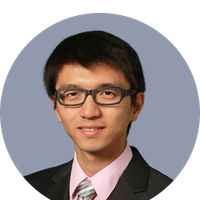Wood is the natural choice of
load-bearing material and has been widely used in construction since ancient
times. The new developments of high-rise buildings and lightweight vehicles set
higher requirements in mechanical strength, which natural wood generally fails
to meet. With innovative structural engineering, wood has been made as an
extremely attractive, strong, and lightweight structural material.
Chaoji Chen currently is a professor at the School of Resource and Environmental Sciences in Wuhan University.
Before joining Wuhan University, he worked with Prof. Liangbing Hu at the
University of Maryland College Park as a postdoctoral researcher, focusing on
wood engineering and functionalization towards sustainability. He has made
several breakthroughs in mainly five areas: lightweight structural materials,
energy storage, environmental remediation, flexible electronics, and
bioplastics.
Dr. Chen has largely contributed to
developing super wood that is as strong as steel but six times lighter. The developed
super wood was selected as the winner of the R&D 100 Awards of 2018. More
recently, Chen and co-workers developed the second generation of “super wood”
called “3D-molded wood” that demonstrates both excellent formability (the
capability to be folded and molded into various complex 3D shapes) and high
mechanical strength (as strong as Al alloy but 3 times lighter).
Moreover, the developed super wood and 3D-molded wood show much lower
environmental impact than their petrochemical based counterparts such as steel,
Al alloys, plastics and polymer-based composites, representing a new generation
of sustainable lightweight structural materials.
Wood has a unique nature-made
hierarchically porous microstructure with multiple aligned,
low-tortuosity channels, which is an ideal ultrathick 3D current collector
for rechargeable batteries after facile engineering (carbonization,
coating of conductive particles). Dr. Chen has developed a series of
wood batteries and supercapacitor technologies, including the innovative
concept of an all-wood structured supercapacitor with a record-high mass
loading and areal energy density, a highly conductive, low-tortuosity 3D wood current
collector for the construction of high energy density cathode electrode, a
super flexible, ultrathick, high-energy lithium-oxygen battery using super
flexible wood as electrode scaffold, and a safe, low-cost, high-performance
flow battery by pore engineering of carbonized wood scaffold to facilitate
ion and electrolyte transport.
The survival of trees is fundamentally
associated with their ability to transport water and nutrients between their
living tissues. Flow pathways in the tree are
interconnected to each other in a three-dimensional space, forming a
continuous, dynamic pathway for multiscale mass transport. Chen has contributed to the novel effects provided by the engineered wood towards developing
emerging environmental remediation technologies such as wood-based 2D and 3D
membranes that simultaneously ensure high flux and high efficiency for water
filtration and solar desalination. In particular, salt accumulation on the
solar evaporator surface has been a long-standing issue. He has made a
scientific breakthrough in addressing this issue by bimodal pore structure
engineering of bilayer wood scaffold.
Wood with a lignocellulosic fibrous
structure can be directly made into flexible films and compressible sponges
through a top-down approach. He has developed a series of innovative engineered
wood materials for various electronic, optical, and acoustic technologies,
including a compressible wood carbon sponge with durable compressibility and
flexibility for high-performance strain sensors, an ultra-thin, strong wood
film with a record-small thickness of several micrometers, a high modulus of 43
GPa for next-generation acoustic speakers, and an imprinted wood with a
designed pattern for optical microlens, which was recommended and highlighted
by Nature.
Recently, through a bottom-up approach, Chen has
also created a cellulosic dynamic gel with Turing-patterned microstructure and
tunable mechanical, ionic, and viscoelastic properties for electronic skin and
a strong, recyclable, biodegradable lignocellulosic bioplastic directly from
biomass waste.




